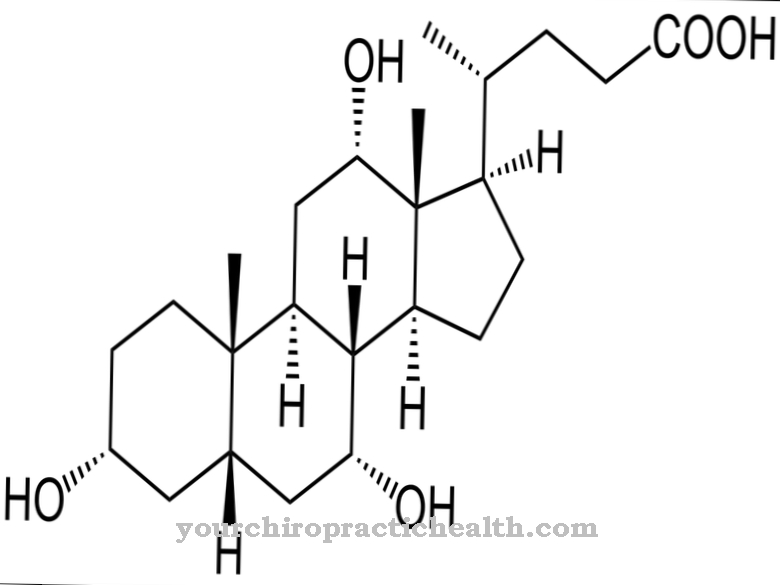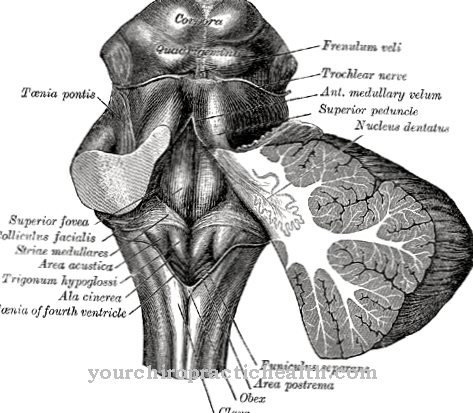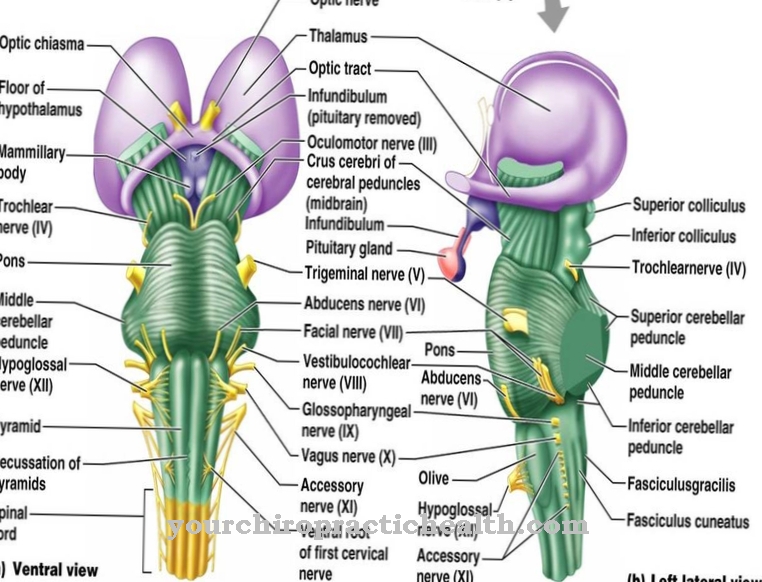In the human organism this takes over kidney important functions. Disorders of the kidney impair bodily regulatory processes that are vital.
What is the kidney?

The kidney is an internal organ that is present twice in all vertebrates. In science, the kidney is assigned to the so-called urinary system; the urinary system is a group of organs involved in the production and excretion of urine or urine.
The kidneys take on important functions within this group of organs. The Greek name for kidney is nephros; Against this background, a medical sub-area dedicated to the kidney is also Nephrology called.In its external shape, the kidney resembles a bean. The organ in healthy adults is approximately 12 centimeters long. The weight of a kidney is around 150 grams.
Anatomy & structure
In humans, the two are brown-red Kidneys on the right and left sides of the spine. The kidney must be located approximately at the level of the lowest ribs and behind the peritoneum.
On each kidney there is a comparatively smaller adrenal gland, which may have the shape of a crescent moon. The kidney consists of the renal medulla and a kidney cortex that surrounds the medulla. The renal cortex contains, among other things, kidney corpuscles and parts of the kidney tubules (tubular elements).
The kidney is connected to a person's bloodstream through the renal vein and artery. While the stomach, spleen and pancreas are adjacent to the left kidney, the kidney on the right side of the body is overlapped by the liver - therefore the right kidney is usually slightly lower than the left organ.
On the back of each kidney is crossed by different nerves, which can cause pain on the kidney to radiate into the lower abdomen.
Functions & tasks

In the human body it functions kidney in particular as a filter organ. For example, blood is filtered in the kidney corpuscles in the renal cortex.
The product of this filtering through the kidneys is the so-called primary urine (non-concentrated urine). The primary urine contains, among other things, components (such as toxins) that are to be excreted - these are then filtered out by the kidneys in a further step to the extent that the terminal urine (urine) is produced.
Other components of the primary urine that the organism still needs (such as water and sugar) are fed back into the bloodstream through the kidneys (or the renal tubules) in parallel. The urine eventually collects in the renal pelvis and from here it reaches the ureter and bladder, where it is then excreted.
The kidneys are also involved in the water balance of the organism through urine production - thus the kidneys also have an influence on the regulation of blood pressure.
Last but not least, the kidneys also support the body's electrolyte balance (electrolytes include salts, for example) by controlling the urine concentration.
Other tasks of the kidney include, for example, the production of hormones that are required for blood formation and the formation of vitamin D3.
Diseases

Ailments and diseases that the kidney are of various kinds. Impairments of the kidneys often lead to disorders of the kidney functions. As a result, various regulatory processes in the organism are affected.
A distinction can initially be made, for example, between diseases that affect the kidney corpuscles and those that affect the renal tubules. Impairments to the kidney corpuscles are often caused by autoimmune reactions - this is where the immune system falsely turns against the body's own tissue.
Diseases of the renal tubules, on the other hand, are often caused by acute infections (e.g. bacterial renal pelvic inflammation) or the influence of harmful substances.
Already congenital impairments of the kidney can be expressed, for example, in various malformations; for example, only a single kidney can be formed. Other possible diseases of the kidneys also include malignant growths (tumors) or metabolic diseases (such as gout, in which uric acid crystals are deposited).
Loss of function of the kidneys with possible subsequent kidney failure is finally referred to as renal insufficiency.
Typical & common diseases
- Kidney failure (renal failure)
- Acute kidney failure
- Chronic renal failure (chronic kidney failure)
- Pelvic inflammation
- Inflammation of the kidneys

















.jpg)







.jpg)


